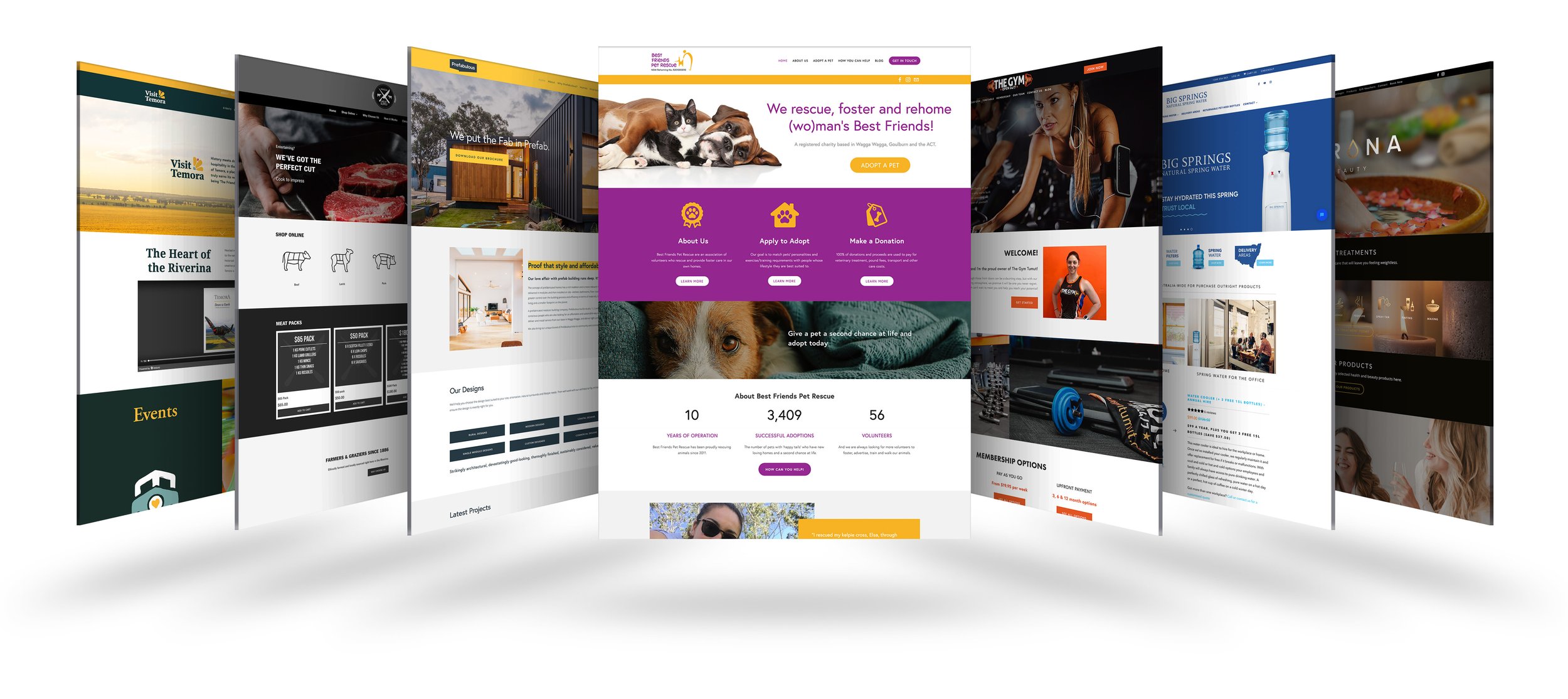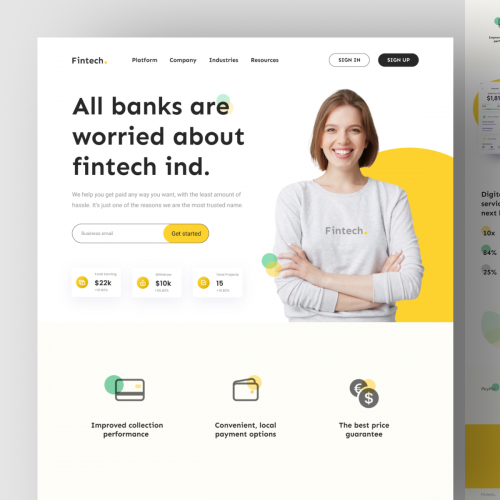High-Converting Website Design Solutions for Enhanced Engagement
High-Converting Website Design Solutions for Enhanced Engagement
Blog Article
Leading Tips for Producing an Impactful Site Design That Transforms
In today's digital landscape, the relevance of an impactful web site design can not be overstated, specifically when it comes to converting visitors right into clients. To achieve this, one have to consider a range of factors, consisting of comprehending the target market, focusing on individual experience, and optimizing for mobile platforms. The tactical usage of engaging call-to-actions and a well-defined visual pecking order plays an important function in assisting individuals through their trip. As we discover these necessary aspects, it ends up being apparent that the success of your website depends upon greater than simply looks; it calls for a thoughtful method to style and performance.

Understand Your Target Market
Recognizing your target market is essential to efficient website design, as it lays the foundation for creating an appealing customer experience. Recognizing that your customers are, including their demographics, preferences, and behaviors, allows developers to customize the website's content, design, and performance to fulfill certain requirements.
Carrying out comprehensive marketing research is vital in this procedure. Studies, interviews, and analytics can offer important insights right into user assumptions and pain factors. By compiling this information, developers can develop customer personas that represent various segments of the audience, making sure that design choices are notified and appropriate.
Furthermore, comprehending the target audience assists in choosing proper design components such as color pattern, typography, and images that resonate with users. A site that talks directly to its target market cultivates a feeling of connection and trust, urging longer visits and higher conversion prices.
Eventually, a user-centered approach to site layout not only improves customer contentment yet additionally sustains business goals by driving engagement and commitment. By focusing on the requirements and preferences of the target market, a site can efficiently serve its objective and attain preferred results.
Prioritize Individual Experience
To improve the total effectiveness of an internet site, prioritizing user experience (UX) is crucial (Website Design). A well-designed UX guarantees that visitors can browse the site effortlessly, find details rapidly, and engage with content meaningfully. This results in enhanced customer fulfillment and higher conversion rates
Begin by executing instinctive navigation. Menus ought to be rationally structured, permitting users to locate essential locations of the website with marginal initiative. Uniformity in layout aspects, such as color systems and typefaces, cultivates experience, which is crucial for keeping customer interaction.
Additionally, think about the filling rate of your web site. A delay of just a few seconds can bring about considerable drop-offs, as users are less most likely to wait for a slow-loading page. Enhancing images and optimizing code can improve efficiency and preserve visitors.
Additionally, quality in content presentation is vital. Usage concise, appealing language and separate message with visuals to boost readability. By prioritizing customer experience, you not just create a more delightful setting for visitors but additionally strengthen your brand name's credibility. Ultimately, a concentrate on UX is a financial investment in the long-lasting success of your internet site.
Enhance for Mobile Gadgets
Maximizing for mobile phones is vital in today's electronic landscape, where an increasing variety of individuals accessibility web sites via mobile phones and tablet computers. A mobile-friendly design not just enhances individual experience but also plays a substantial duty in improving online search engine positions. To accomplish this, it is important to embrace a receptive layout that instantly adapts to numerous screen sizes and positionings.

Packing speed is one more crucial aspect; mobile customers are commonly less client and expect rapid accessibility to information. Optimize photos and leverage browser caching to boost efficiency. Ultimately, examination your web site on multiple tools and screen resolutions to recognize and rectify any prospective usability problems. By focusing on mobile optimization, you ensure that your web site stays competitive and efficiently engages a wider target market.
Usage Compelling Call-to-Actions
A site's effectiveness commonly depends upon its capacity to guide site visitors towards preferred activities, making compelling call-to-actions (CTAs) important parts of style. CTAs act as the essential factors that direct users to involve with the site, whether that suggests buying, enrolling in a newsletter, or downloading and install a resource.
To develop effective CTAs, quality is paramount. Usage succinct language that plainly communicates the activity you desire the user to take. Phrases such as "Get going," "Authorize Up Free," or "Store Now" not just convey seriousness however likewise remove uncertainty. The positioning of CTAs is just as important; they ought to be purposefully placed throughout the web page to guarantee they are conveniently visible, specifically in high-traffic areas.
Furthermore, the layout of CTAs ought to stick out without being meddlesome. Utilize contrasting shades and clear fonts to ensure they catch focus. Additionally, take into consideration utilizing directional cues, such as arrows or images, to assist customers towards these switches. By concentrating on these aspects, companies can substantially enhance user interaction, driving conversions and eventually attaining their website's objectives.
Concentrate On Visual Pecking Order
Reliable website style depends heavily on a well-structured visual hierarchy that guides customers with material flawlessly. By arranging aspects in a manner that prioritizes details, developers can improve customer experience and assist in decision-making. This entails using size, color, comparison, and spacing purposefully to accentuate one of the most important elements of a web page.
The usage of bigger fonts for headings and subheadings develops a clear difference between various sections, enabling customers to scan content effortlessly. Additionally, using contrasting colors for switches and calls-to-action can catch user focus and encourage communication. internet Whitespace is an additional important component; it avoids mess and makes it possible for individuals to concentrate on crucial messages without diversions.
Pictures and graphics need to complement the message while likewise sticking to the recognized hierarchy, try here enhancing the overall message (Website Design). Uniformity in design aspects, such as shade systems and typography, further enhances the visual hierarchy, making navigating instinctive

Final Thought
In final thought, effective web site design demands an extensive understanding of the target audience, prioritization of customer experience, and mobile optimization. Ultimately, a well-executed site layout offers as a critical component in driving individual activities and achieving organization goals.
Report this page